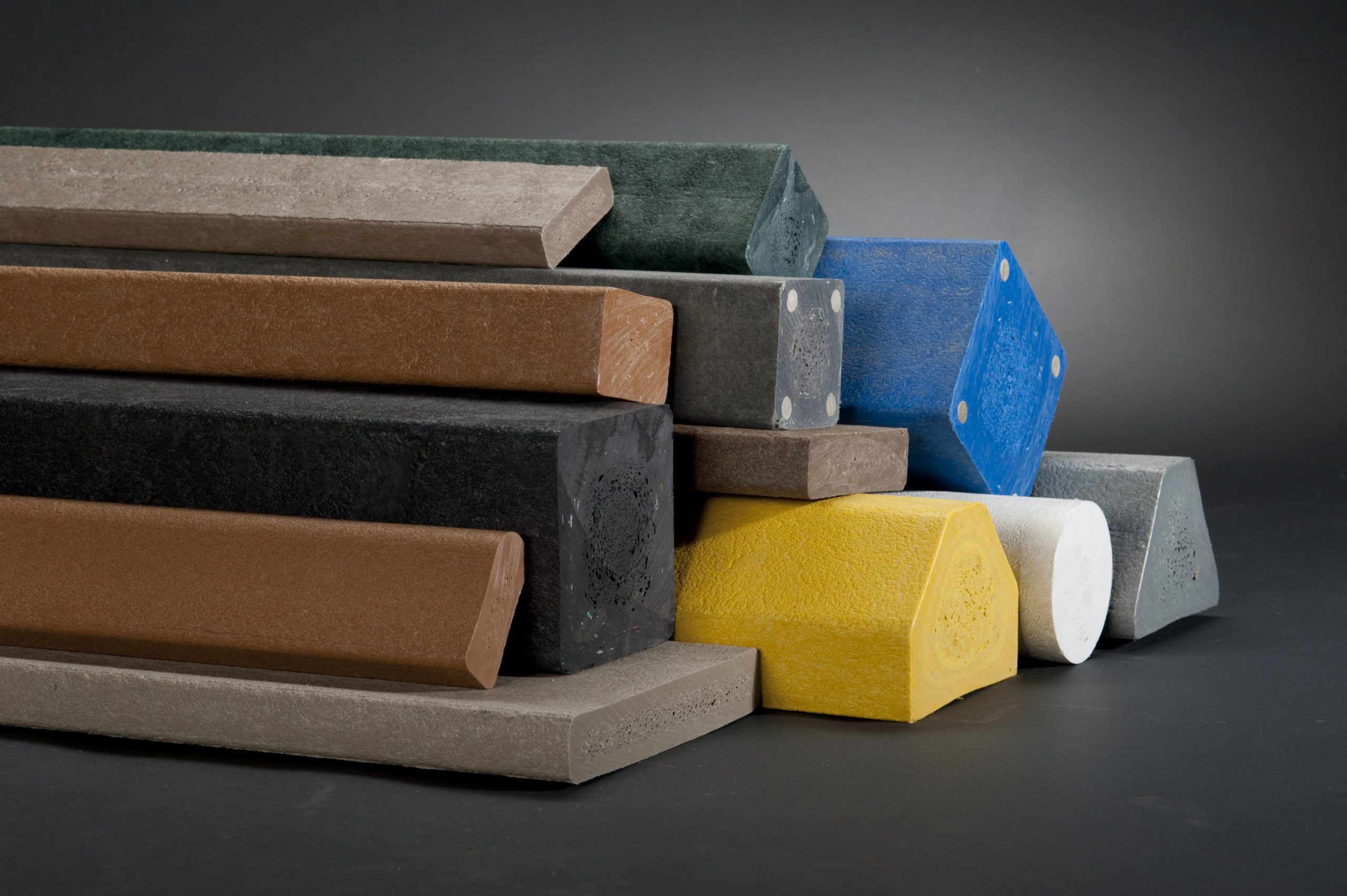Ingenious Composites in Modern Building Projects
Ingenious Composites in Modern Building Projects
Blog Article
Opening the Ecological Benefits of Recycled Composites in Construction and Layout
In the realm of construction and layout, the usage of recycled compounds holds considerable promise for enhancing sustainability techniques and decreasing ecological effect (composites). By incorporating these ingenious materials, there is a possible to deal with critical problems such as waste minimization, energy preservation, and a reduction in carbon impact. The change towards a more lasting future in these industries pivots on unlocking the full possibility of recycled compounds. This discussion will check out the multifaceted benefits and obstacles connected with integrating recycled compounds into construction and design, using a glance right into the transformative possibilities that lie ahead.

Environmental Impact Decrease
The decrease of ecological effect through the use of recycled composites in construction and layout plays an essential role in lasting techniques. By including recycled composites into structure products, the building market can considerably decrease its carbon impact and contribute to a more eco-friendly future. These sustainable materials, made from repurposed plastics, wood fibers, or various other recycled components, offer a practical alternative to standard building materials without compromising on quality or durability.
Recycled composites help draw away waste from land fills and minimize the need for extracting basic materials, thus conserving natural deposits. Additionally, the production process of these composites typically takes in much less power and discharges fewer greenhouse gases compared to creating virgin materials (composites). This change in the direction of utilizing recycled compounds not just minimizes ecological harm yet likewise advertises a round economic climate by urging the reuse of materials that would or else be disposed of
Waste Minimization
With a concentrate on reducing waste in building and construction and design, the assimilation of recycled composites supplies a sustainable remedy to decrease ecological impact. Waste reduction is an important facet of sustainable practices, and making use of recycled composites offers a chance to attain this goal successfully. By utilizing products that have actually already served their first purpose, such as recycled plastics or redeemed wood fibers, the construction and style sectors can substantially lower the quantity of waste generated and sent to garbage dumps.
Recycled compounds have the possible to draw away significant amounts of waste from conventional disposal techniques, adding to a much more round economic situation where sources are utilized efficiently. Additionally, the manufacturing process of recycled compounds commonly eats less energy and creates fewer exhausts contrasted to virgin materials, better decreasing the environmental impact of building and layout tasks.
Implementing waste minimization strategies with the incorporation of recycled composites not just aids in preserving natural deposits but also advertises an extra lasting method to building and designing for a greener future.
Power Preservation
Integrating recycled compounds not only reduces waste in building and design yet likewise plays a critical duty in improving energy conservation techniques within the sector. Using recycled composites in construction can significantly add to power conservation through numerous ways. First of all, the production of virgin products normally about his needs considerable energy inputs, whereas making use of recycled compounds takes in less power, consequently minimizing overall power usage. Additionally, integrating recycled composites can add to far better insulation properties in structures, reducing the demand for excessive home heating or air conditioning, and consequently decreasing energy use for climate control. In addition, the light-weight nature of lots of recycled compounds can result in lighter structures, requiring less power for transport and setup. By promoting the use of recycled compounds in building and construction and design, the market can make substantial strides in the direction of achieving energy effectiveness and minimizing its carbon footprint, ultimately contributing to a much more lasting constructed environment.
Carbon Footprint Decrease
Enhancing sustainability practices through the utilization of recycled compounds in building and construction and style substantially decreases the carbon footprint of the industry. By including recycled products into the production of compounds, the requirement for virgin resources decreases, leading to reduced energy consumption and greenhouse gas emissions linked with standard manufacturing procedures. This decrease in carbon footprint is crucial in combating environment modification and advertising an extra ecologically friendly strategy to building and design.
The carbon impact reduction accomplished via the adoption of recycled compounds aligns with the worldwide press in the direction of lasting practices and the decrease of commercial emissions. Eventually, by focusing on the integration of recycled composites, the market can make substantial strides in lowering its carbon footprint and adding to an extra sustainable future.
Sustainable Future
The assimilation of recycled composites in construction and layout not only addresses prompt environmental concerns yet also lays a strong foundation for a lasting future in the market. By incorporating recycled compounds into structure materials and products, the construction and layout industries can considerably decrease their reliance on virgin sources, resulting in an extra circular economic situation. This shift in the direction of sustainability is critical for minimizing the ecological influence of conventional building and construction methods, which frequently lead to high levels of waste generation and source deficiency.

Final Thought
To conclude, recycled composites supply considerable ecological advantages in building and construction and layout by reducing ecological influence, decreasing waste, preserving power, reducing carbon footprint, and promoting a sustainable future. Embracing the usage of recycled compounds can add to a much more environmentally-friendly method to building and design, inevitably leading to a more lasting and greener future for all.
The decrease of environmental impact through the usage of recycled compounds in building and style plays a crucial duty in lasting methods.With a focus on minimizing waste in construction and layout, the combination of recycled compounds supplies a lasting service to reduce ecological effect. By advertising the use of recycled composites in building and construction and style, the industry can make substantial strides towards achieving power efficiency and lowering its carbon footprint, ultimately adding to a more lasting built setting.

Report this page